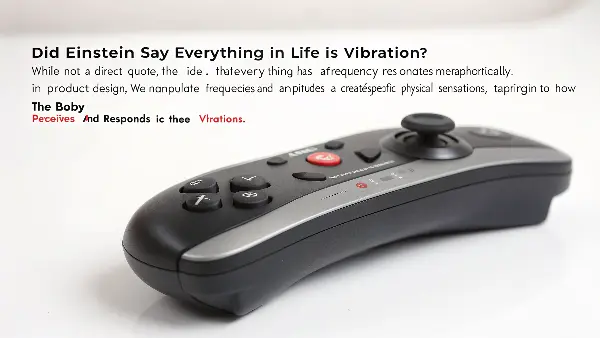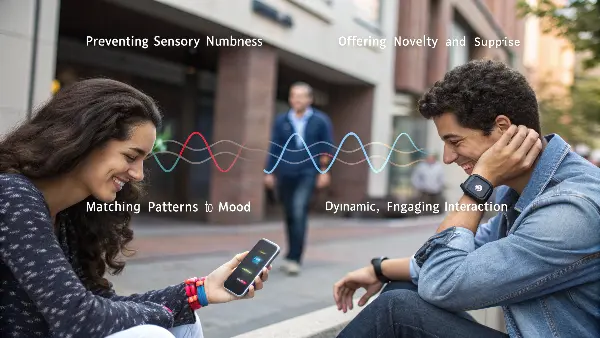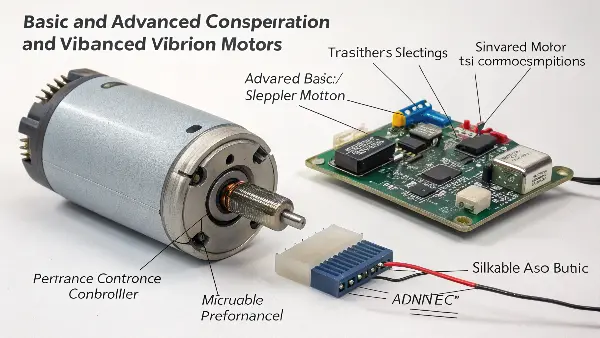Are your adult products just buzzing, or are they truly delivering nuanced pleasure? Standard vibration might feel one-note, leaving customers wanting more sophisticated sensations. Focusing only on intensity overlooks the power of patterns and modes in creating truly memorable experiences.
Different vibration modes and patterns significantly impact user experience, moving beyond simple intensity to offer varied sensations like pulsing, waves, escalating rhythms, and targeted stimulation. This variety caters to diverse preferences and enhances product appeal, setting premium toys apart.
As someone deeply involved in designing and manufacturing adult products with PrivyPlay, I’ve seen firsthand how crucial vibration technology is. It’s not just about making something vibrate; it’s about how it vibrates. Early toys often had basic, maybe two-speed, buzzing motors. Today, the technology allows for incredible complexity. Customers are more discerning now. They expect products that can offer a range of feelings, from gentle pulsations to powerful, complex rhythms. Overlooking the details of vibration modes means missing a huge opportunity to delight your customers and differentiate your brand. Let’s explore why these modes matter so much and what defines a truly exceptional vibration experience.
What are the most important types of vibration modes?
Offering only a single, steady vibration pattern limits your product’s appeal. Customers have diverse preferences, and what feels amazing to one person might be boring or overwhelming to another. Providing a variety of well-designed modes is key to satisfying a wider audience and creating versatile products.
Essential vibration modes include steady vibration at multiple intensities, pulsing patterns (slow, fast, rhythmic), escalation modes (ramping up intensity or speed), wave patterns (mimicking rising and falling sensations), and potentially random or mixed patterns for unpredictability.
!
When we talk about vibration modes at PrivyPlay, we’re thinking about the specific character of the vibration. It’s more than just turning it on or off, or setting it to low, medium, or high. The way the vibration behaves over time creates distinct sensations. Let’s break down some core types:
Core Vibration Mode Categories
- Steady State: This is the classic, continuous buzz. The key here is offering multiple, distinct intensity levels. A good range allows users to find their perfect baseline, from a gentle hum to a deep rumble. We often aim for at least 3-5 distinct levels.
- Pulsing: Instead of continuous vibration, pulsing modes turn the vibration on and off in a rhythmic way.
- Slow Pulse: Creates a teasing, gentle throb.
- Fast Pulse: Offers a more intense, staccato sensation.
- Rhythmic Pulse: Follows a specific beat or pattern, adding a layer of predictability or musicality.
- Escalation/Ramp-Up: These modes gradually increase the intensity or frequency of the vibration. This builds anticipation and can lead to a more powerful climax. Some might ramp up and then drop back down, creating cycles.
- Wave/Swell: This mode tries to mimic a rising and falling sensation, like waves. The intensity smoothly increases and then decreases, often in a continuous loop. It can feel very encompassing and less mechanical than simple pulsing.
- Combination/Random Modes: These mix different patterns or intensities, sometimes unpredictably. This keeps the sensation fresh and prevents the body from getting too accustomed to one type of stimulus.
I remember testing prototypes where a seemingly small change in a pulse pattern made a huge difference in tester feedback. The goal isn’t just to have many modes, but to have distinct, well-tuned modes that offer genuinely different feelings. Thinking about these categories helps us ensure our products offer the versatility that modern customers expect.Did Einstein say everything in life is vibration?
It’s fascinating to think about vibration beyond just our products. While Einstein focused on physics, the idea that everything has a frequency resonates metaphorically. In product design, we’re literally manipulating frequencies and amplitudes to create specific physical sensations, tapping into how the body perceives and responds to these vibrations.
While not a direct quote about pleasure products, the concept attributed to Einstein that "everything in life is vibration" highlights the fundamental nature of frequencies. In toys, different vibration frequencies and amplitudes translate directly into distinct physical sensations perceived by nerve endings, impacting pleasure.

Okay, let’s address this intriguing point. While the exact quote "Everything in life is vibration" is often attributed to Einstein, finding a direct source is difficult. However, his work, and physics in general, certainly established that matter at its core is energy, and energy involves vibrations and frequencies. This fundamental concept has been adopted by various philosophical and spiritual movements. But how does this relate to designing adult toys?
For us at PrivyPlay, the connection is tangible. We are literally working with vibration – the rapid back-and-forth movement of a motor. The characteristics of this movement are defined by:
- Frequency: How fast the motor oscillates, usually measured in Hertz (Hz). Higher frequencies often feel more "buzzy" or tingly on the surface. Lower frequencies tend to feel deeper, more "rumbly," penetrating tissues more effectively.
- Amplitude: How far the motor moves back and forth with each oscillation. Higher amplitude means stronger, more intense vibrations, regardless of frequency.
Different combinations of frequency and amplitude create vastly different sensations. A low-frequency, high-amplitude vibration might be perfect for deep muscle massage or a powerful internal G-spot stimulator. A high-frequency, low-amplitude vibration might be better suited for delicate clitoral stimulation.Applying Vibration Physics to Product Design
Sensation Goal Likely Frequency Approach Likely Amplitude Approach Example Application Surface Tingling Higher Frequency (e.g., >100 Hz) Lower to Moderate Amplitude Clitoral stimulator tip Deep Rumbling Lower Frequency (e.g., <80 Hz) Moderate to High Amplitude Wand massager, internal toy Gentle Pulse Varies Low Amplitude, Patterned Teasing modes Intense Throb Varies High Amplitude, Patterned Climax-focused patterns So, while Einstein might not have been thinking about pleasure products, the underlying principle holds true in our work. We manipulate physical vibrations at specific frequencies and amplitudes to interact with the body’s sensory receptors. Understanding how subtle changes in these physical properties translate into perceived pleasure is core to designing effective and desirable products. It’s applied physics for enhancing sensation. We constantly experiment with motor types, weights, and electronic controls to fine-tune these vibrations.
How do varied vibration patterns enhance user experience?
Simply making a product vibrate isn’t enough anymore. Users crave novelty and control. Monotonous vibration can lead to sensory adaptation, where the nerves stop responding as intensely. Varied patterns keep sensations fresh, build anticipation, and cater to different moods and desires, significantly boosting satisfaction.
Varied vibration patterns enhance experience by preventing sensory numbness (adaptation), offering novelty and surprise, allowing users to match patterns to their mood or desired intensity curve (e.g., slow build vs. instant intensity), and providing a more dynamic, engaging interaction compared to simple steady vibration.

Think about listening to music. Would you want to listen to a single note held indefinitely? Probably not. You appreciate melody, rhythm, changes in volume – dynamics. Vibration for pleasure works similarly. Our bodies are incredibly adaptive. Constant, unchanging stimulation can lead to a phenomenon called sensory adaptation or neural fatigue. Basically, the nerves get used to the input and stop responding as strongly. This is why a vibration that felt intense initially might feel less so after a few minutes.
Varied patterns directly combat this. By changing the frequency, amplitude, or rhythm (pulsing, waves, escalation), the stimulation changes, keeping the nerve endings engaged and preventing that numbing effect. This allows for longer use and potentially more intense sensations over time. Beyond just preventing boredom, different patterns create different feelings.
Benefits of Pattern Variety:
- Combats Adaptation: As mentioned, changing rhythms keep nerves firing and sensations feeling fresh.
- Creates Dynamics & Narrative: Patterns like escalation build tension and anticipation, creating a mini-story or journey towards climax. Wave patterns can feel more natural or soothing. Pulsing can be teasing or intensely rhythmic.
- Offers Novelty & Discovery: Trying different patterns is part of the fun. Users enjoy exploring what feels best for them at that moment. A product with 10 well-designed patterns offers much more replay value than one with only 3 intensity levels.
- Matches Moods & Intentions: Sometimes a user wants a slow, gentle, teasing sensation. Other times they want a rapid build-up to a powerful release. Having patterns suited for different scenarios makes the product far more versatile.
- Allows Targeted Stimulation: Some complex patterns might involve multiple motors working together or specific rhythms designed to stimulate certain areas more effectively than a simple buzz.
When we develop products at PrivyPlay, curating the right set of patterns is a major focus. It’s not just about quantity, but quality and variety. We test patterns extensively. Does this pulse feel distinct from the others? Does this escalation build satisfyingly? Does this wave feel smooth? Getting these details right elevates a product from a simple vibrating object to a sophisticated pleasure tool. I’ve seen products fail because they had 20 patterns that all felt vaguely the same, and others succeed because they had 7 patterns that were each unique and purposeful.What makes advanced multi-pattern vibration motors superior?
Using basic, off-the-shelf motors limits your product’s potential. They might offer simple high/low settings but lack the control needed for sophisticated patterns. Advanced motor technology and control circuitry are essential for delivering the nuanced, varied, and reliable performance customers expect from premium products.
Advanced vibration systems use higher quality motors (often brushless for longevity and control), paired with sophisticated microcontrollers. This allows for precise control over frequency and amplitude, enabling smooth transitions, complex patterns, stable performance across battery levels, and often quieter operation.

The secret to great vibration patterns isn’t just the programming; it’s the hardware executing those commands. A cheap, basic motor simply can’t deliver the subtlety and range required for truly impressive modes. Think of it like the difference between a basic speaker and a high-fidelity audio system. Both make noise, but the quality and range are vastly different.
Here’s what sets advanced vibration systems apart:
Key Components of Superior Vibration Systems:
- Motor Quality:
- Coreless Motors: Often used in smaller toys, offering good responsiveness.
- Brushless Motors: Increasingly common in premium products. They offer longer lifespan, greater efficiency, quieter operation, and much more precise control over speed (frequency) and power (amplitude) compared to older brushed motors. This precision is critical for smooth waves or complex rhythmic patterns.
- Eccentric Rotating Mass (ERM) vs. Linear Resonant Actuators (LRA): Most toys use ERM (a weight spinning off-center). LRAs, common in smartphones for haptics, offer more precise, crisp vibrations but often less power/rumble, making them suitable for specific sensations but less common as the primary motor in toys.
- Microcontroller Unit (MCU): This is the "brain" that stores the patterns and sends signals to the motor. A capable MCU can handle complex sequences, smooth transitions between modes and intensities, and manage power efficiently. Basic toys might have very simple controllers limiting pattern complexity.
- Power Management: Advanced systems ensure the vibration performance remains consistent even as the battery drains. Cheaper toys might noticeably weaken or slow down patterns as power drops, leading to an inconsistent experience. Good power regulation prevents this.
- Noise Dampening: Premium products often incorporate design features or internal materials to minimize the operational noise of the motor, enhancing discretion.
As a manufacturer, investing in better motors and control systems is a key decision. I recall a specific project at PrivyPlay where we upgraded the motor and MCU. The exact same vibration patterns programmed onto the new hardware felt significantly better – smoother, more defined, and more powerful where intended. The cost is higher, yes, but the improvement in user experience justifies it for a brand focused on quality. It allows us to deliver patterns that aren’t just different on paper but feel genuinely distinct and more pleasurable in use. This technological edge is a major differentiator in the premium segment of the market.Conclusion
Vibration is more than just intensity; it’s about the nuanced patterns and modes. Choosing quality motors and thoughtful programming elevates a simple product into a sophisticated pleasure tool, enhancing user experience, combating adaptation, and boosting brand reputation. Prioritize diverse, well-executed vibration modes.
